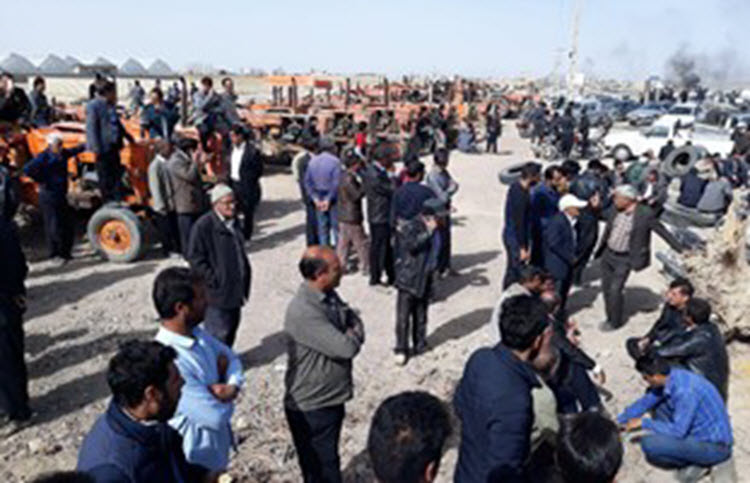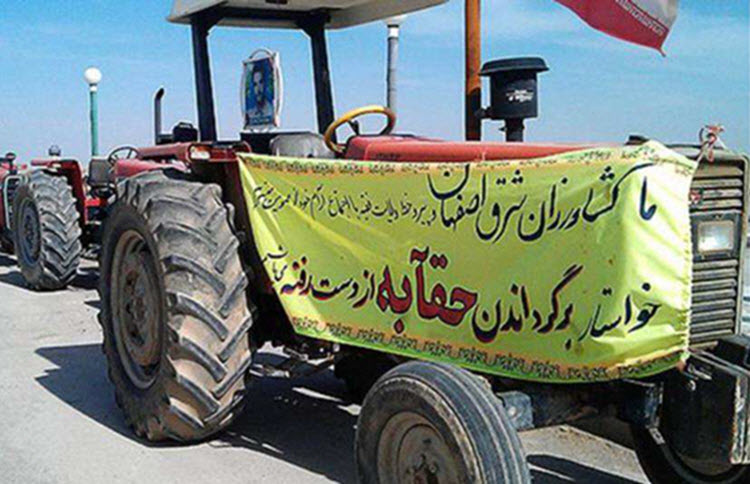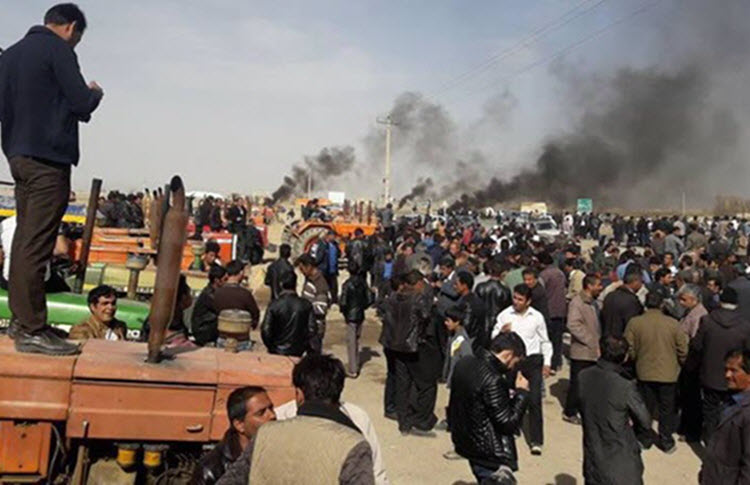
Iran Focus
London, 31 July – Every day, Iranian farmers drove their tractors to the entrance of Varzaneh town, stopping their vehicles next to the canal that once watered their crops, but has been dry for years, and protests against the government’s mismanagement of the water shortages.
One farmer, Mostafa Benvidi, chanted: “We are the people. Help the people. At night they go to bed hungry!”
Many demonstrators hold up signs with the names of officials that they blame for the crisis during their protest.
One sign read: “How long will you eat your bread made with our blood?”
Over time, the protests have only grown and, at times, become violent, as economic problems in the country have caused repeated unrest.
In March, farmers held a sit-in strike in Varzaneh, but the state security forces reacted with violence. Benvidi was wounded and lost sight in his left eye during the clashes. He currently has over 100 pellet shots in his body.
In early July, 11 people were wounded when the Iranian police broke up a protest in Khorramshahr over dirty drinking water.

Benvidi, 30, said: “Officials just come and promise to deal with the crisis and then just leave.”
His family used to grown cotton and crops on their 3-hectare farm, but the lack of water has closed his farm and now his family relies on seasonal work.
The drought
The drought in Iran is the worst in 30 years, according to the United Nations Food and Agriculture Organization. The Iranian Meteorological Organization reports that 97% of the country is affected.
These conditions are mostly affecting Isfahan province, where Varzaneh is located, and other areas in central and southern Iran.
Reza Khalili, an environmental activist, said that about 90% of farming activities have ended because of the drought and that government policies, like rerouting water to factories instead of farms, have worsened the effects of the drought.
In some protests, demonstrators have broken pipelines that divert their water away.

The Regime had previously attempted to buy off the families, but now the people stand united and seek a real solution.
Hamid Safavi, a professor at the Isfahan University of Technology, said: “More social conflict may be on the way. Officials do not have the necessary expertise to manage water resources.”
Now, many people are leaving these areas for a better life.
Ruhollah Sohrabi, a farmer who now works as a builder in other cities, said: “Many of my friends moved to near and far towns to find jobs.”


